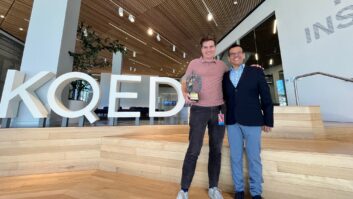The decision by an examiner at the U. S. Patent and Trademark Office in the radio automation patent dispute has industry observers optimistic about the ultimate outcome for broadcasters.
As RW reported, an examiner has rejected many of the key claims in the patents. Mission Abstract Data had sued several of the largest broadcast groups for patent infringement involving hard-disk automation technology. But an “ex-parte” patent reexamination request by Broadcast Electronics — a radio automation supplier not named in the patent infringement lawsuit — led to the latest development.
The PTO examiner’s findings appear to bolster the odds the U.S. District Court for the District of Delaware will grant a stay request by the defendants in the infringement case at a hearing scheduled for this Thursday, according to one legal observer.
“My review of the parties’ briefs and legal standard for motion to stay leads me to believe this might bolster the arguments for staying the case. Granting of the stay was pretty likely to begin with,” said Kevin Goldberg, special counsel at Fletcher, Heald, Hildreth, PLC. “The fact that the USPTO was moving pretty expeditiously toward resolution of the reexamination seemed to indicate that the patents, at least key portions, were not valid.”
Mission Abstract Data has 60 days to respond to the PTO examiner’s rejections of 15 of the 29 challenged claims in one patent and five of 10 claims in another.
It has several options going forward, said another observer, Thomas Ewing, a patent attorney and IP consultant for Avancept LLC. “The claims will be removed from the patents unless the patent owner responds, which seems very likely in this case.” He said Mission Abstract Data “may suggest rewordings of the rejected claims in order to overcome the prior art. The patent owner can appeal if needed and even take the reexamination to court.”
Among the references the patent examiner cited in his report was a manual for an Arrakis Digilink digital audio workstation in 1992.
“The claims that have been rejected by the USPTO are those that define a basic automation system with music on hard drive as is typically used in radio today,” said Mike Palmer, president and CEO of Arrakis Systems. “The rejection was based on the features of the Arrakis Digilink automation system that was first shown at the April, 1991 NAB show, well before the 1994 patent filing. This is definitely a major win for the entire radio industry, not just those who have been named in the lawsuit.”
Palmer credited Broadcast Electronics with bearing the financial cost of the patent reexamination process.
“They searched out everyone, collected the data and crafted the challenge to the patents. It is a good thing that they were so thorough, as it turned out that Arrakis Digilink was the only indisputable prior art. The industry owes BE a great debt of gratitude for their personal and corporate sacrifice on all of our behalf,” Palmer said.
Goldberg at law firm Fletcher Heald reiterated prior advice: “Smaller broadcasters who have not been sued would be well-advised to take any communication from MAD seriously, but obviously now it should also be taken with a grain of salt. Anyone contacted by MAD should do their due diligence: Have an attorney thoroughly review any licensing agreement they receive; dig out any potential indemnification clause that might be invoked to require their software provider to cover legal costs and/or damages; and check to see whether their own insurance policies will cover damages if they have no indemnification.”
Related:
Patent Office Deals Blow to Mission Abstract Data

The case hinges on two patents issued by the U.S. Patent and Trademark Office to Robert J. Goldman, one in 1997 and another in 1998, both titled “Selection and Retrieval of Music From a Digital Database.” This diagram is from one of those patents.










